Samsung Galaxy S23 Series Vs. Galaxy S22 Series: Head-To-Head
CRN reviews the biggest changes with Samsung’s new flagship smartphone lineup, the Galaxy S23 series. These changes include big upgrades such as the S23 Ultra’s 200-megapixel wide sensor, among several other improved camera capabilities, and a new custom Snapdragon processor from Qualcomm for all three phones.
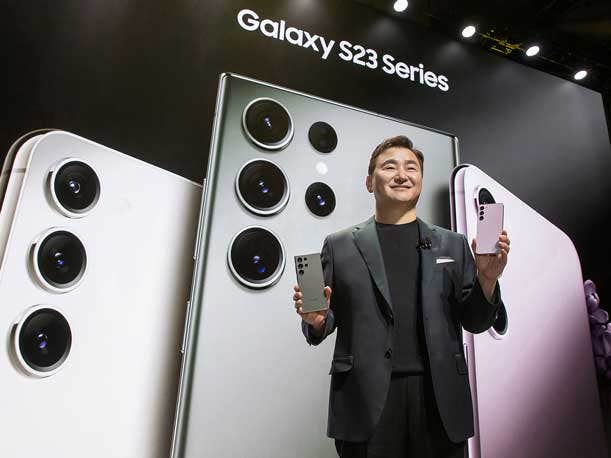
New Camera Capabilities, New Processor
Samsung’s new Galaxy S23 series is giving the flagship phone lineup a substantial upgrade with a focus on improved camera capabilities and a faster processor.
Unveiled earlier this month at the Galaxy Unpacked 2023 event, the South Korean electronics giant believes the photo-taking bona fides of the three Galaxy S23 devices will soon become the envy of those with other phones. This is evidenced by a new ad showcasing the S23 Ultra’s improved Nightography capabilities and a new object-detection engine, which have people asking, “Can you send me that?”
The biggest upgrade hitting all three devices is Qualcomm’s new custom processor, the Snapdragon 8 Gen 2 Mobile Platform for Galaxy. All three devices support Samsung’s new One UI 5.1 user interface and run on the Android 13 operating system right out of the box.
Elsewhere, the S23 Ultra gets the biggest camera upgrade in the form of a 200-megapixel wide sensor that significantly increases the resolution of photos. But the S23 and S23+ get other upgrades, such as a new 12-megapixel front-facing camera sensor as well as the ability to take selfie videos at 60 frames per second and 8K videos with the rear-facing sensors like the S23 Ultra can.
What follows is a breakdown of how the Galaxy S23 Ultra, Galaxy S23+ and Galaxy S23 phones compare to the models of the last generation: the Galaxy S22 Ultra, Galaxy S22+ and Galaxy S22. This includes a comparison of the chipsets, cameras, displays, form factors, connectivity features, memory options, batteries and other specs.
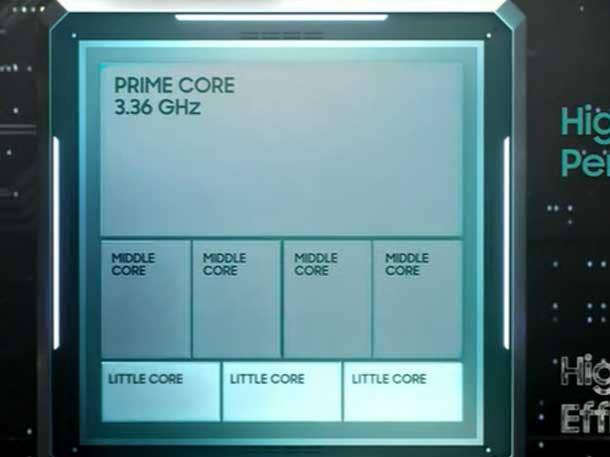
Chipset: S23 Ultra, S23, S23+ Versus S22 Ultra, S22, S22+
The new Samsung Galaxy S23 Ultra, S23 and S23+ devices come with a new custom application processor from Qualcomm called the Snapdragon 8 Gen 2 Mobile Platform for Galaxy. Samsung calls this processor the “most powerful and efficient platform” in a Galaxy smartphone to date and say it’s faster than any other Snapdragon chip on the market.
The new Snapdragon chip comes with a new 8-core Kryo CPU microarchitecture that improves the processing capabilities of the S23 series by roughly 30 percent compared to the S22 devices. It also has an optimized Adreno GPU, which provides 41 percent faster graphics performance compared to the last Galaxy generation. The GPU also adds real-time ray tracing support for games on the S23 Ultra.
The new Galaxy phones also come with an improved NPU, short for neural processing unit, which is 49 percent faster thanks to an AI algorithm that improves low-light photography.
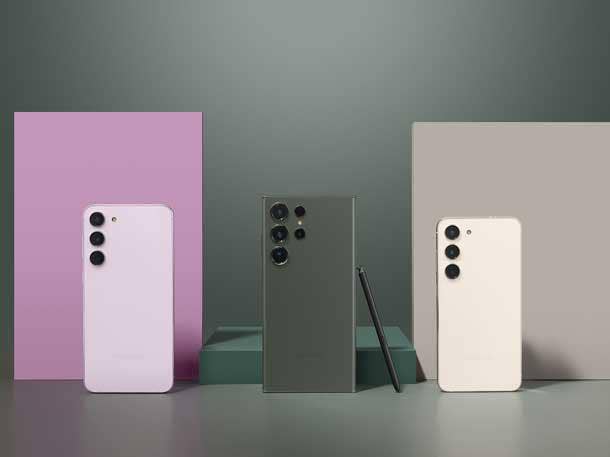
Cameras: S23 Ultra, S23, S23+ Versus S22 Ultra, S22, S22+
Like with any phone hitting the market, the improved camera capabilities of the S23 series are likely the biggest draw, especially when it comes to the flagship S23 Ultra.
The S23 Ultra comes with a big hardware upgrade in the form of a 200-megapixel wide lens sensor. That provides a substantial resolution boost over the 108-megapixel sensor of the S22 Ultra.
As for the other sensors, the S23 Ultra has similar specs to its predecessor: a 12-megapixel ultra-wide lens, a 10-megapixel telephoto lens with 3x optical zoom and another 10-megapixel telephoto lens with 10x optical zone on the back. The front-facing camera, however, only has a 12-megapixel lens, a resolution downgrade from the 40-megapixel sensor of the Ultra S22.
The S23 and S23+, on the other hand, only have one sensor upgrade with a new 12-megapixel front-facing camera, which is up from the 10 megapixels offered in their predecessors. Otherwise, they have similar rear-facing cameras: a 12-megapixel ultra-wide lens, a 50-megapixel wide lens and a 10-megapixel telephoto lens with 3x optical zoom.
The selfie camera on the new phones can now take video at 60 frames per second, doubling the frame rate from the previous generation. Videos taken with the rear-facing sensors can now be recorded in an 8K resolution at 30 frames per second with a wider angle. In addition, the phones used improved optical image stabilization technology to make videos less blurry.
The new S23 devices come with other upgrades for taking photos and videos. This includes improved Nightography capabilities that improve the way photos and videos look in a variety of ambient conditions. There’s also a new AI-powered image signal processing algorithm that enhances the details of objects, including facial features, and brings out color tone. The phones introduce a new fast autofocus feature to for taking quicker selfies.
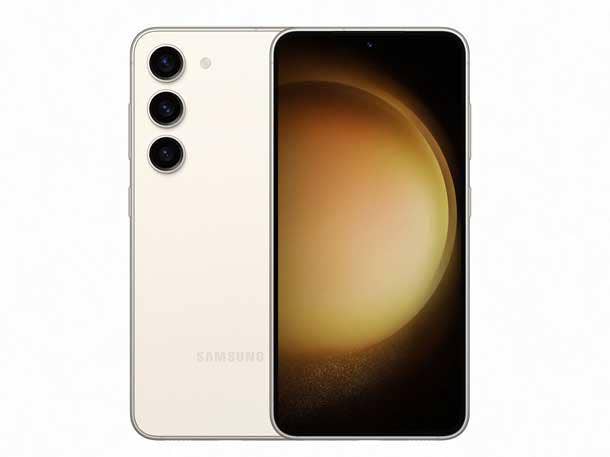
Display, Form Factor: S23 Ultra, S23, S23+ Versus S22 Ultra, S22, S22+
The Galaxy S23 series come with a few improvements and changes for the display and form factor.
The most noticeable change is with the S23 and S23+, which lack the bulging contour housing for the rear-facing camera sensors of the previous generation, making the phones slimmer and smoother.
The S23 Ultra, on the other hand, comes with a 6.8-inch edge display that has a larger and flatter surface area thanks to reduced curvature.
All the phones come with a new enhanced comfort feature, which seeks to reduce eye strain at night by giving the ability to change the display’s color tones and contrast levels.
The vision booster feature from the previous generation is improved, giving users three levels of lighting instead of two to improve screen visibility during bright days.
The S23, S23+ and S23 Ultra phones are slightly larger than their predecessors, though only by a hair.
The S23 measures 70.9 millimeters wide and 146.3 millimeters tall, up from the S22’s 70.6-millimeter length and 146-millimeter height, but they have the same 7.6-millimter depth (not counting the S22’s contour housing) and 168-gram weight.
The S23+ measures 76.2 millimeters wide and 157.8 millimeters tall, up from the S22+’s 75.8-millimeter length and 157.4-millimeter height, but they have the same 7.6-millimter depth (not counting the S22+’s contour housing) and 196-gram weight.
The S23 Ultra measures 78.1 millimeters wide and 163.4 millimeters tall, up from the S22 Ultra’s 77.9-millimeter length and 163.3-millimeter height, but they have the same 8.9-millimter depth. The S23 Ultra is slightly heavier, weighs 234 grams versus the S22 Ultra’s 229 grams.
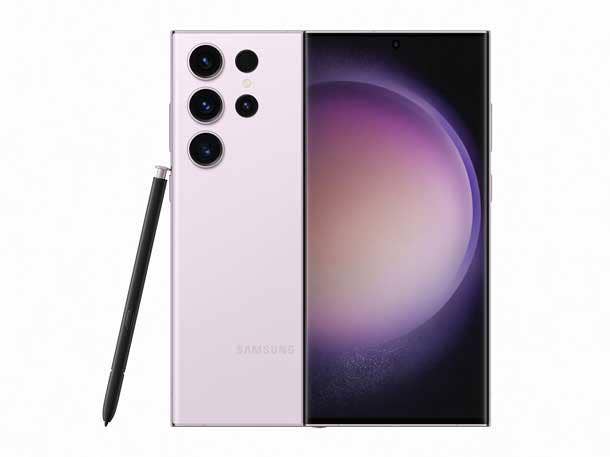
Connectivity, Memory: S23 Ultra, S23, S23+ Versus S22 Ultra, S22, S22+
The Galaxy S23 series has few upgrades when it comes to connectivity features and memory options.
Whereas the S22 Ultra and S22+ only had Wi-Fi 6E while the S22 had Wi-Fi 6, all three phones in the S23 series have Wi-Fi 6E now. This means the S23 Ultra, S23+ and S23 all support Wi-FI 6E’s new super-fast 6GHz frequency band in addition to the slower, existing 2.4GHz and 5GHz bands.
All three phones now have Bluetooth 5.3, a step up from the Bluetooth 5.2 supported by the S22 series. Bluetooth 5.3 comes with a few minor improvements for throughput, encryption and energy efficiency. Otherwise, the phones have the same 5G, LTE and Wi-Fi Direct features as their predecessors.
As for memory and storage options, the S23 Ultra has three of the same configurations as its predecessor: 12GB of memory with 1TB of storage, 12GB of memory with 512GB of storage and 12GB of memory with 256GB of storage. The lowest tier, however, provides a nice upgrade, giving users 8GB of memory with 256GB of storage, doubling the storage available in this tier for the S23 Ultra.
The reverse has happened for the S23+ and S23 phones, offering a new tier: 8GB of memory with 512GB of storage. The S23+ has one other tier, 8GB of memory with 256GB of storage, while lacking the 8GB of memory with 128GB storage option of its predecessor. The S23’s two other tiers are the same as the previous generation: 8GB of memory with 256GB of storage and 8GB of memory with 128GB of storage.
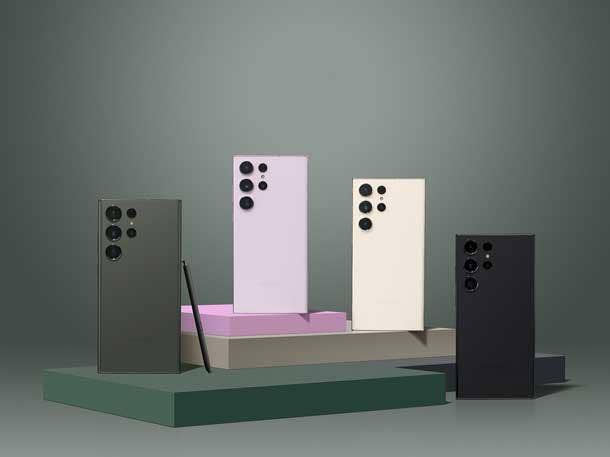
Battery And Other Features: S23 Ultra, S23, S23+ Versus S22 Ultra, S22, S22+
Only two of the new Galaxy S23 phones get an upgraded battery, though the chipset powering all three will result in improved battery life because of the new Snapdragon chip’s improved efficiency.
The S23 has a 3,900-milliampere battery, up from the 3,700-milliampere battery of its predecessor. The S23+ has a 4,700-milliampere battery, up from the 4,500-milliampere battery of its predecessor.
The S23 Ultra has the same 5,000-milliampere battery as its predecessor. Samsung noted this as a good thing, however, because it didn’t have to increase the battery’s size to support the S23 Ultra’s new 200-megapixel wide lens without sacrificing battery life.
As for other features, the S23 Ultra comes with the S pen stylus like its predecessor, but the new device supports the ability to co-edit notes when users collaborate on Samsung Notes through Google Meet.